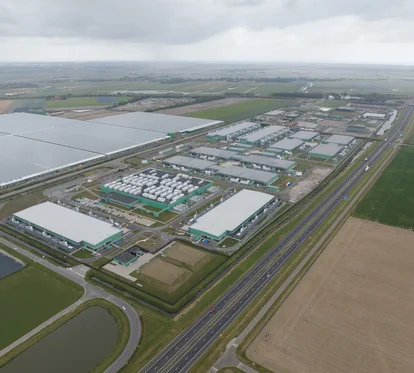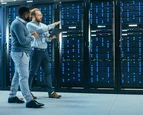Green electricity
According to recent figures from CBS (Central Bureau of Statistics), the electricity consumption of data centers increased from 1.6 billion kilowatt hours to 3.2 billion kilowatt hours between 2017 and 2020. Meanwhile, 2.8 percent of national electricity consumption goes to data centers. Five new large data centers were added during that period. But 88% of the power consumed is green, according to industry organization Dutch Data Center Association. Moreover, data centers are by nature energy efficient in order to keep operational costs as low as possible. “Internet traffic has increased tenfold over the past ten years, but the energy consumption of data centers has barely increased," says Rob Elsinga, National Technology Officer (NTO) for Microsoft Netherlands.
Energy-efficient
He says an efficiency drive is underway as companies and institutions close their own small server rooms and store their data in the cloud at larger data centers. That is more efficient, because if China is sleeping the available space can be used for the US and vice versa," he says. According to Elsinga, Dutch data centers are among the most economical in the world in terms of energy consumption - expressed in Power Usage Effectiveness (PUE) or Data Center Infrastructure Efficiency (DCiE). This is also the opinion of Rianne Spinka, CSR manager at Centric. ,, Our servers are the most energy efficient available. We have also moved away from our own data centers and rent space for our customers in Equinix's AM4 data center in Amsterdam, among other places. That is one of the most sustainable data centers there is," she says. AM4 is cooled with outside air and, if it is too hot, via an underground water storage facility. The residual heat will soon be supplied to the MeerEnergie heat network in Amsterdam, to which 5,000 homes and others will be connected.
CO2-negative
Microsoft has three data centers in the Netherlands, one of which is a hyperscale data center in Middenmeer, North Holland. These are too far from residential areas to be able to supply residual heat. However, they have been running on green energy since 2012. Through Power Purchase Agreements (PPA) we purchase 100% renewable energy, especially wind energy from Vattenfall and Eneco, but it is not always fully available. In practice, 60% of our energy demand is covered by renewable energy," says Elsinga. Microsoft wants to be energy-neutral by 2030 and even CO2-negative by 2050. This includes capturing and storing CO2 and, through the Rabo Carbon Bank, helping farmers in South America to sequester CO2 in trees and crops. Microsoft also wants to be water-positive by 2030, or in other words add more water than it uses. The Dutch data centers are cooled with outside air 95% of the year. If the outside temperature is too high, they use evaporated water. Together with the Hoogheemraadschap Hollands Noorderkwartier and ECW Energy, the company is investigating a method to collect rainwater and use it for cooling on hot days.
Stricter conditions
Microsoft and Equinix may be leading by example, but according to Professor Michiel de Vries, not all data centers are doing so. It sounds nice, but the reality is different," he says. As a public administration expert, De Vries is mainly targeting the government. According to him, the government should map out the environmental effects at a much earlier stage and impose stricter conditions on data centers. For example, that they use rainwater instead of tap water for cooling. Or that they install solar panels on the roof, so that they need less wind energy. ,, I am not against data centers in principle, but hardly any conditions are set for such a hyperscale center in Zeewolde. Only that there should be a row of indigenous trees around it. Not that there should be solar panels on the roof. That is a missed opportunity," according to De Vries. If it continues like this, data centers will consume 10% to 20% of our electricity. As a government you have to set conditions for this.”
Too many disadvantages
Activist Guus Dix also sees too many disadvantages. He is sad to see how large data centers of Google or Microsoft consume the energy of an entire wind farm. If you zoom out you see that the structural growth in the demand for energy exceeds the growth of renewable energy. Should data centers then appropriate that available green energy, while we also want to get houses and large companies like Tata Steel off the gas?" he wonders. He criticizes the priority given to data centers on the congested power grid, while the connection of solar and wind farms is squeezed. Furthermore, many data centers still use tap water for cooling and add chemicals to it. ,,There are solutions for this, but if it costs too much money they prefer not to do it," says Dix. He also does not want to sacrifice farmland for hyperscale centers. The Netherlands will not become more beautiful by this kind of 'boxing' ", he states.



